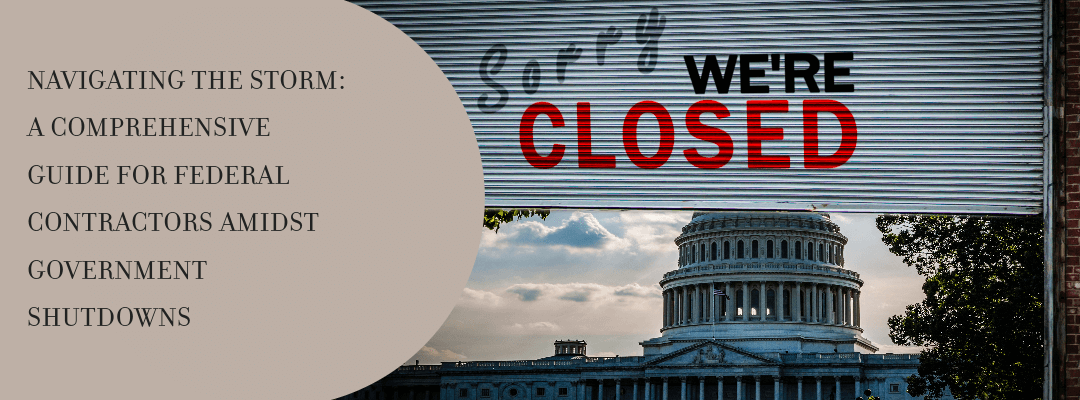Navigating the Storm: A Comprehensive Guide for Federal Contractors Amidst Government Shutdowns

Introduction
The recurring threat of government shutdowns has become an unsettling reality for federal contractors. With the federal government often on the brink of running out of funds, it's crucial for businesses to prepare for the worst. This guide aims to provide key steps to mitigate the negative impacts of a government shutdown, focusing on labor and employment considerations for government contractors.
Understanding the Landscape
Anticipate the Consequences
As TIME and The Hill have pointed out, government shutdowns have become increasingly frequent, affecting various sectors including federal facilities. During a shutdown:
- Government facilities will close.
- No new contracts or modifications will be issued.
- Non-essential government employees will be furloughed.
- Invoices will remain unpaid, potentially causing delays even after the shutdown ends.
Assess the Impact on Your Contracts
Not all contracts are affected equally by a government shutdown. As Axios notes, contracts funded by appropriations that don't expire at the end of the fiscal year may continue. However, most contracts, especially those requiring access to closed government facilities, will be impacted.
Communication is Key
Engage with Contracting Officers
Maintaining open lines of communication with your contracting officer is crucial. As NBC News highlights, political tensions can make shutdowns more likely, and contracting officers may be furloughed during these periods.
Coordinate with Subcontractors
Just as you need to stay in touch with contracting officers, it's vital to communicate clearly with subcontractors. Ensure that everyone is on the same page regarding work stoppages to avoid incurring costs that you can't recover from the government.
Cost Mitigation and Documentation
Develop Alternative Work Plans
As Reuters suggests, the lack of economic data during a shutdown can make decision-making difficult. To mitigate costs, consider reassigning employees to other projects or encouraging them to take vacation time.
Keep Records
Document all costs and communications related to the shutdown. This will be crucial for recovering costs and for compliance with Federal Acquisition Regulation (FAR) clauses.
Workforce Management
Compliance with Labor Laws
Be cautious about Fair Labor Standards Act (FLSA) exemptions and state wage laws. Non-compliance can result in steep penalties.
Decisions on Furloughs and Layoffs
Decide whether to furlough or lay off employees, keeping in mind the benefits and drawbacks of each. This decision should be made carefully to avoid discrimination claims and to comply with state laws.
Security and Verification Concerns
Security clearances and employment verifications may be delayed, as Wikipedia notes. Plan your staffing needs accordingly.
What's Next?
While a government shutdown can be disruptive, proper planning can help mitigate its impact. Keep lines of communication open, document all actions and costs, and be prepared to adapt as the situation evolves.
References
- "Trump breaks with McCarthy, pushing Republicans to shut down the government," NBC News, Link
- "How a Government Shutdown Could Affect You," TIME, Link
- "Here’s how many times the federal government has shut down," The Hill, Link
- "Longest government shutdowns in U.S. history: A look back as America nears 22nd shutdown," Axios, Link
- "US government shutdown would delay release of key economic data, official says," Reuters, Link
- "Government shutdowns in the United States," Wikipedia, Link

